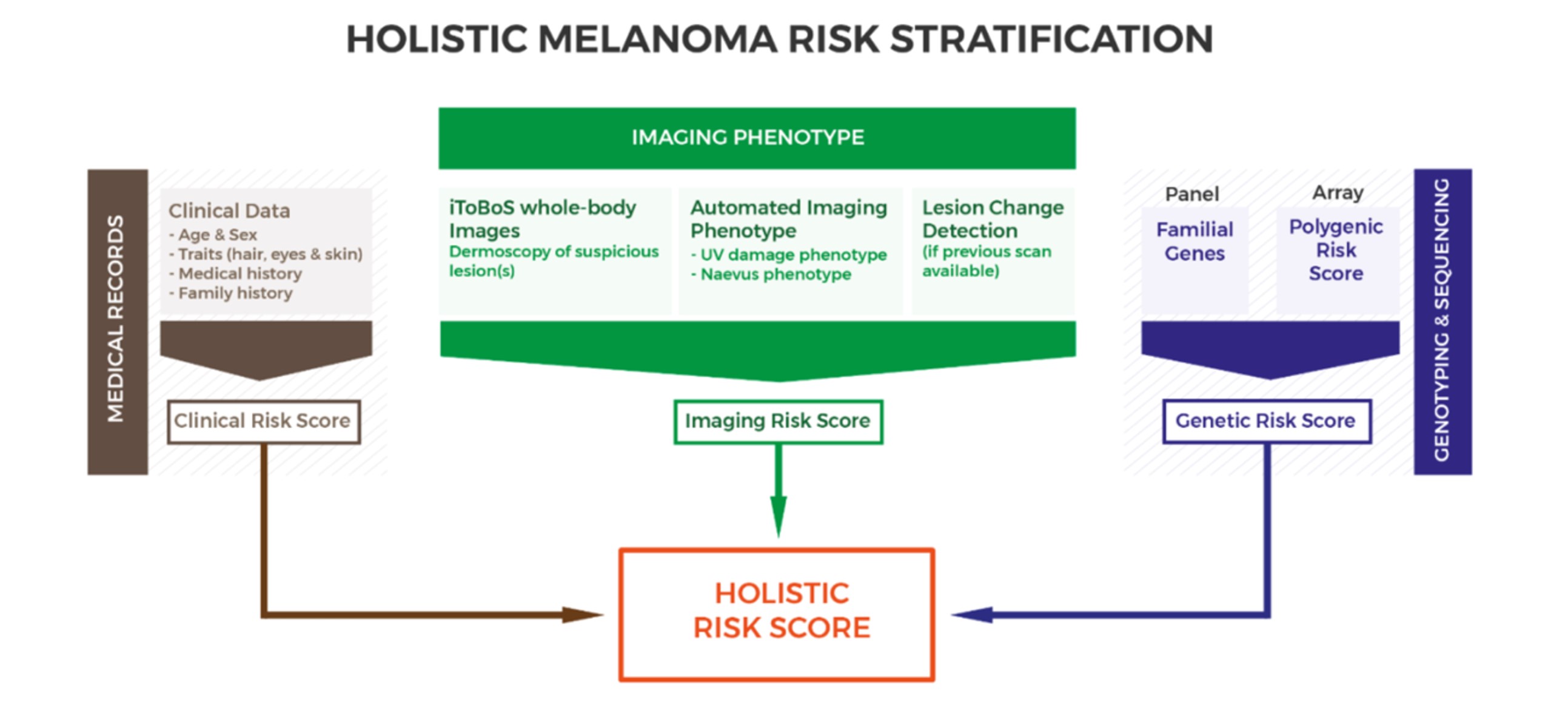Some genes have been associated with the risk of melanoma. A mutation of in some high penetrance risk genes are associated with familial melanoma and multiple primary melanomas.
Medium/low penetrance risk genes are associated with red hair and freckles and increased nevi count in no-blue eye colour and/or renal cell carcinoma. The hypothesis is that inheritance of high penetrance genes usually there are multiple cases of melanoma in the family. And inheritance of medium/low penetrance genes predisposes white skinned peoples to melanoma but that predisposition is weak, there may be only one or two cases in the family.
Each participant will have the saliva sample collected with self-collection kit for the DNA sample for genetics analysis. Saliva samples will be processed, and DNA will be extracted and genotyped on a customized Illumina Infinium CoreExome DNA microarray which will enable the generation of a polygenic risk score.
For the first clinical study, two centers will be enrolled for testing the participants. The Queensland University that retrospectively includes 150 patients genotype and the Hospital Clinic of Barcelona that prospectively will perform the genotyping of 150 participants.
The genetic information is used to screen for germline mutations and markers known to be associated with melanoma and keratinocyte skin cancer risk, nevi development and pigmentation. Two different types of genetic risk assessment will be performed: all participants will be genotyped using an array which will detect common variants in low to moderate risk susceptibility genes (e.g. MITFI, MC1R) and individuals with a strong personal and/or family history suggestive of inherited mutation will be offered an additional panel sequencing to detect familial mutations in high penetrance genes as CDKN2A, POLE, XP, CDK4, POT1, BAP1, TERT, ACD, TERF2IP, BCRA1, BCRA2 and TP53.
The combination of genotyping results can be used to generate a polygenic risk score. The method for generating a polygenic risk score uses an adaptation of a previously validated method (Cust et al, 2018), which includes an algorithm capable of adding additional risk factors, thereby generating a holistic risk score. Testing of genomic variants can identify people who are susceptible to melanoma despite not having a traditional phenotypic risk profile.

The project iToBiS (Intelligent Total Body Scanner System) comprises a new total body scanner and a Computer Aided Diagnostics (CAD) tool that integrate clinical, genetics and images from each research participant. Only the final risk score will be used in combination to the other risk factors collected from clinical and images data to provide the individual risk stratification in the final iToBos System.
G.Rezze, J.Malvehy
Hospital Clinic of Barcelona, IDIBAPS, iToBoS
